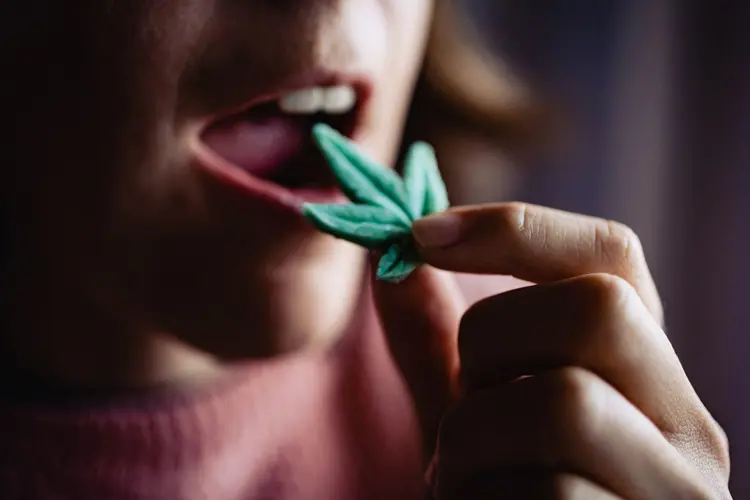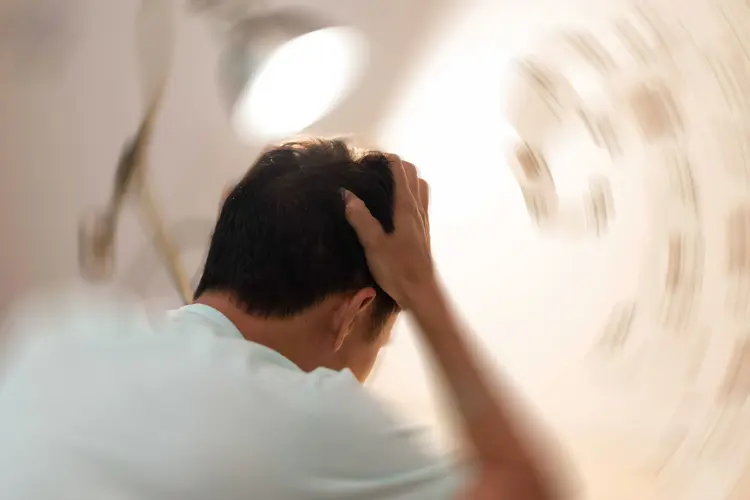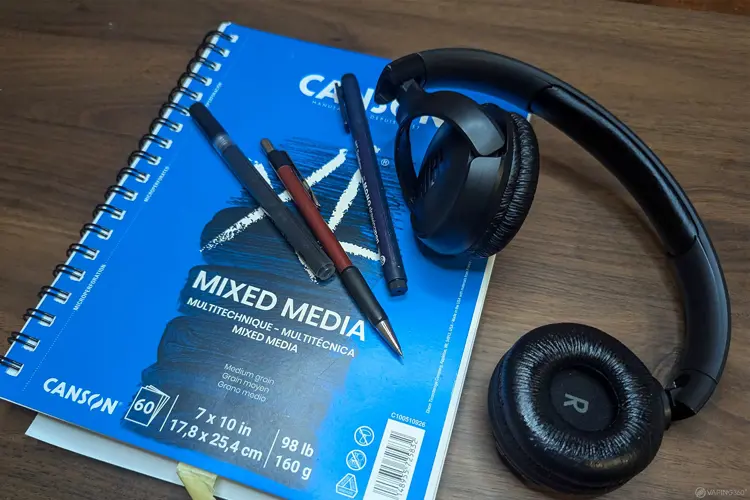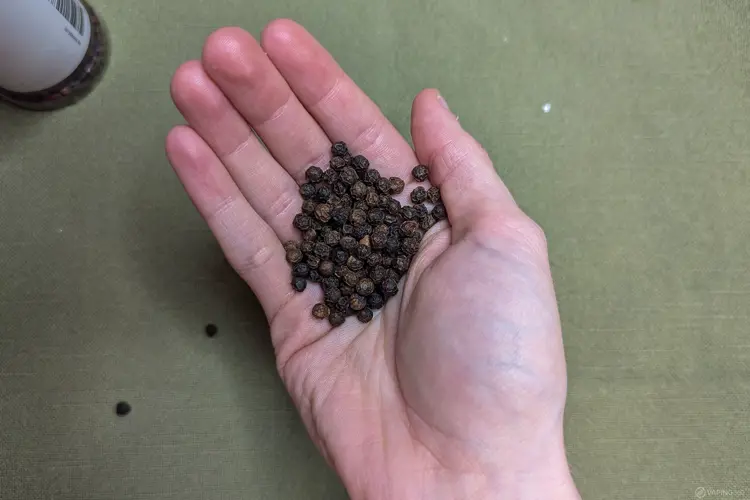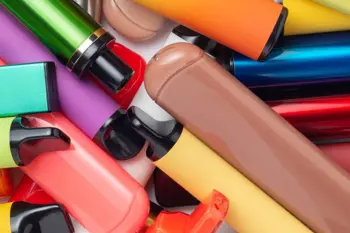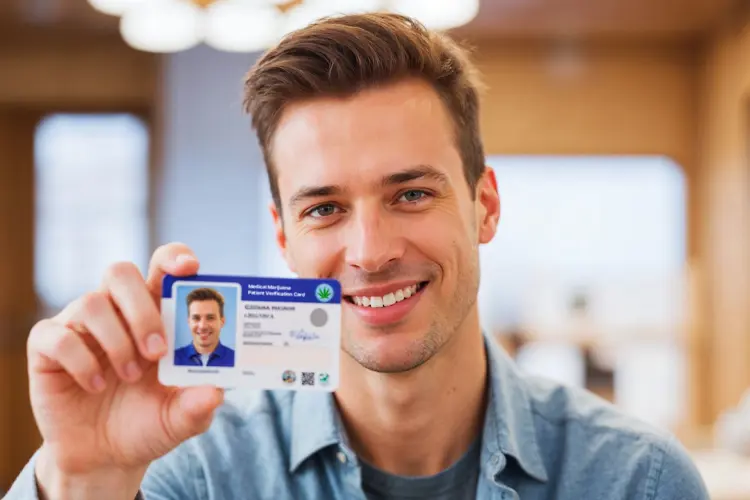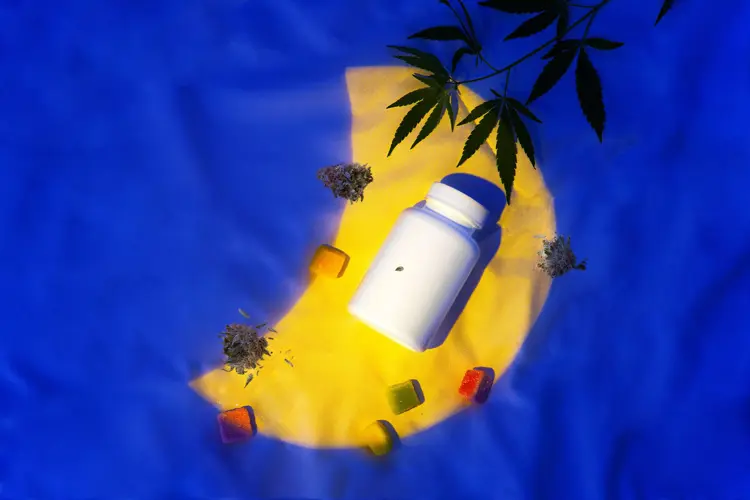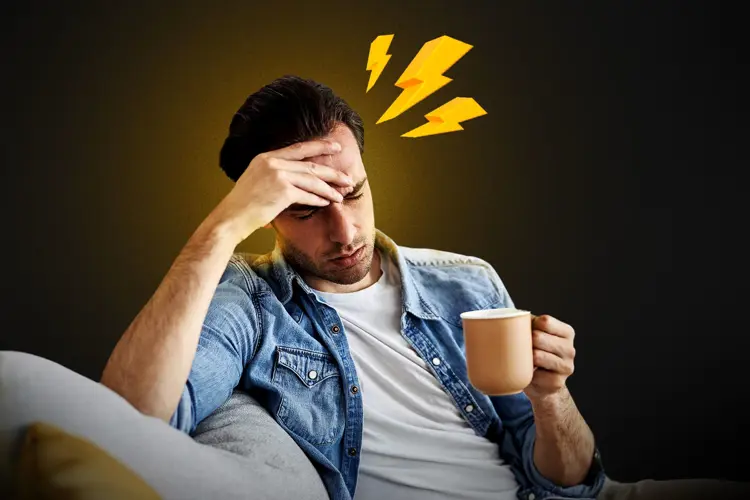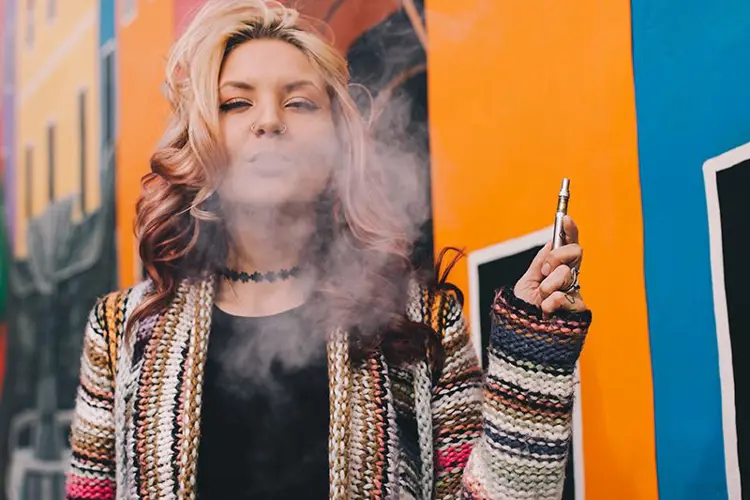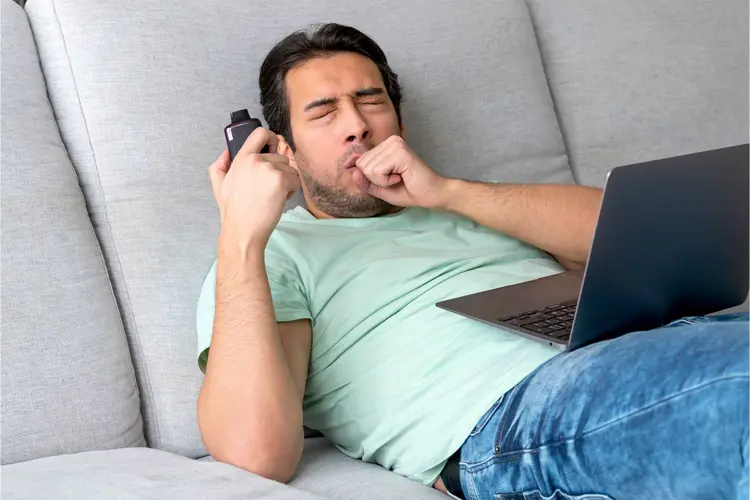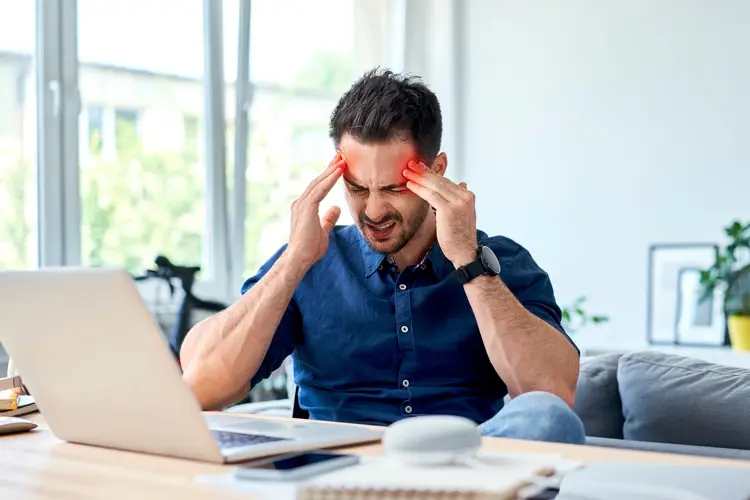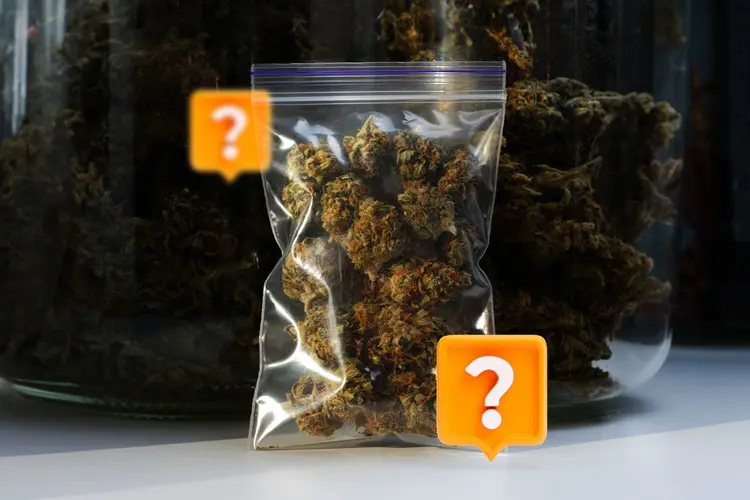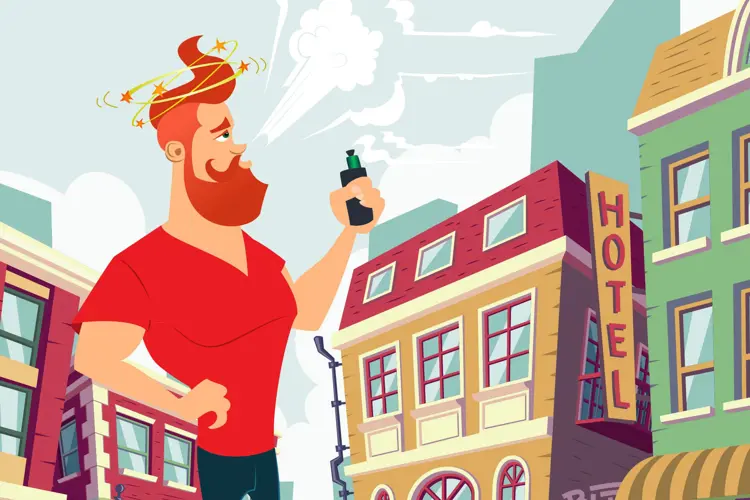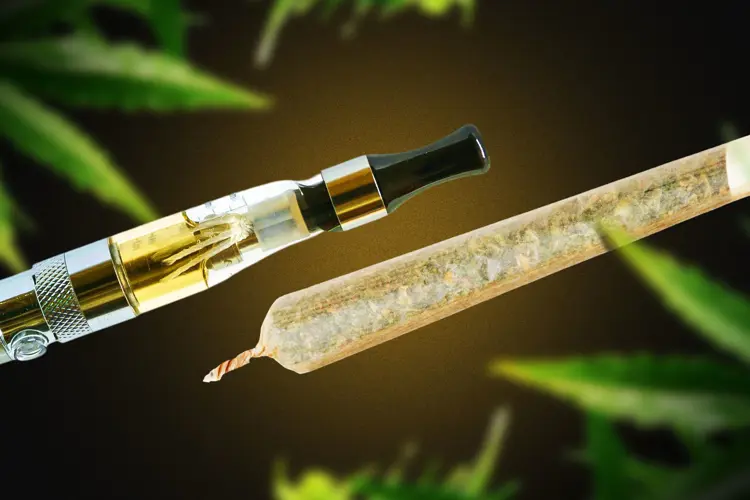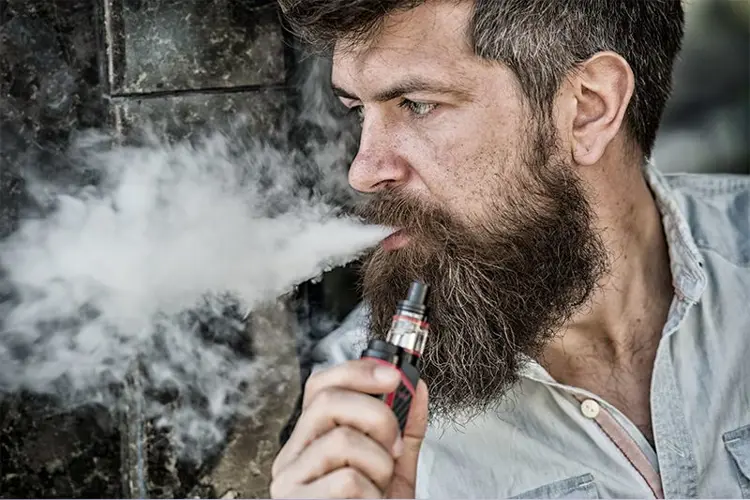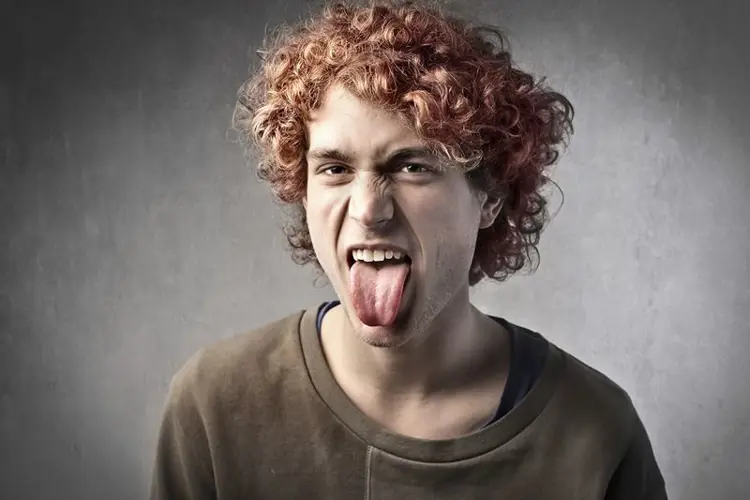From classic remedies to experimental hacks floating around online, I’ve heard a whole lot of interesting tips for sobering up quickly. Some seem to have merit, but it’s difficult to sift through the gimmicks and old wives’ tales—or, more accurately, old stoners’ tales—to find worthwhile advice.
I’m fortunate that THC-induced anxiety is rare for me and that the opposite effect is more common. Still, it has happened, and I know how scary it can be to get too high.
My worst reaction to date was after poorly dosing a delta 8 THC product, which is something to be mindful of. Hemp-derived cannabis products—like their delta 9 cousins—can still trigger anxiety or even outright panic, so it’s crucial for those sensitive to THC not to treat them as some kind of vanilla weed variation. Dose delta 8 THC and HHC as carefully as you would marijuana.
That said, edibles are often at fault for long-lasting highs, rather than inhalable products like carts. For individuals who are looking to reduce their risk of a high that overstays its welcome, either delta 9 or delta 8 disposables can simplify pacing, but nothing eliminates the risk completely.
Knowing how to tackle an uncomfortable THC buzz may prevent a sticky future situation. We can’t turn back time, but there are ways to manage the ride.
How long should a high last?
The length of any high depends on a lot of factors: dose, method of consumption, tolerance, and a slew of physiological (and probably psychological) variables. Even genetics can play a role for some people.
THC’s psychotropic effects might last a long time for first-time THC users, or anyone who’s consumed an excessive dose. Certain health conditions can worsen the situation, too.
It's gotten relatively easy for me to gauge how I’ll respond to certain doses, brands, or types of products—but even that isn’t completely reliable. Sometimes, my body just behaves in ways outside the norm. The same could happen to anyone, whether new to weed or very experienced. That’s why people say to go slow.
THC’s hardest-hitting effects generally fade within a few hours, peaking in the first hour with vaping or smoking. Edibles are gradually metabolized, which means they take longer to kick in but can linger in a user’s system for much longer. After a too-large dose, digestible products like gummies can last for ten or more hours.
How can I tell if I’m too high?
The “too high” goalpost sits somewhere different for everyone. Typically, it involves a fairly brief period of feeling overwhelmed by our senses and environment, soon calming into an intense but enjoyable state. Other times we can really overdo it, and the too-high feeling can seem overwhelming.
Certain reactions are definite makers for a bad THC experience and are likely to cause varying degrees of distress. I’d strongly recommend stopping weed consumption immediately if you notice these:
- Visual or auditory hallucinations
- Racing heart
- Short-term memory loss
- Poor motor coordination
- Anxiety or paranoia
- Slurring or incoherent speech
- Vomiting
For most of us, these severe reactions are very rare, and when they do happen, they fade quickly, becoming valuable lessons about how much is too much. For others, an extreme high can lead to more dangerous territory.
Cannabis toxicity is rare in non-pediatric patients but can result in acute symptoms of psychosis—which should fade if there’s no underlying condition. Those with an anxiety disorder, a history of panic attacks, or bipolar disorder should proceed with great care. Large doses of weed may put these users at an increased risk of adverse and possibly long-lasting psychological effects.
That doesn’t mean weed is a universal no-go for those with anxiety. For me personally, it’s a helpful tool. But I also know my limits and how THC affects me.
Weed can’t kill people, but it can make someone feel like they’re dying. Those already at risk of severe psychological distress may have more to lose than gain from cannabis. It’s not for everyone. If you don’t get anything positive out of weed—or less positive than negative—there’s no shame in stopping.
The body’s response to cannabis can be unpredictable. Bad side effects aren’t always preventable, so it’s worth developing a plan before being caught in a bad high.
How to avoid getting too high (“greening out”)
You might have guessed it, but it’s easier to avoid “greening out” than it is to escape an unpleasant high that’s already started.
Some users are predisposed to greening out yet won’t know it before their first few uses. Those new to weed usually have the lowest tolerance and should proceed with the greatest caution.
Monitor your dose
Brand-new users should pay close attention here. Meticulous, careful dosing is worth the extra time, especially early on. Portioned products are also an excellent choice for dose-conscious individuals already familiar with their limits.
First, I’d take a close look at the manufacturer’s suggested dose. We’ll need a realistic idea of the product’s contents to dose carefully—and with hemp, the packaging alone won’t always offer that. That’s why I stick to trusted retailers with transparent safety testing. When there’s a certificate of analysis (COA), I have a pretty good idea of what to expect.
Servings vary between cannabinoids due to potency differences. While a dispensary-bought gummy may contain five milligrams of delta 9 THC, a delta 8 gummy could include twice that. Since delta 9 is about twice as strong as delta 8 THC, the different-sized doses are likely to produce similar effects. HHC gummies commonly land in the middle—less powerful than delta 9 but stronger than delta 8.
Precise dosing is more difficult with carts and disposable vapes, but to be fair, these highs tend to fade quicker and may be less likely to go awry. With vapes, you can start with mini puffs and quickly gauge the strength.
While I don’t recommend smoking over healthier methods, pre-rolled joints are still a beginner-friendly choice. Start with a half-gram or smaller. Don’t assume that a lower THC percentage means a weaker strain, either, since that’s not always the case.
Pace yourself
Go slow, especially if you’re new to weed or have a history of adverse reactions.
When I’m vaping a new cart, I’ll start with a couple of hits under three seconds each, just to get a sense of the oil’s effects. (The “three seconds” part helps me minimize clogs or burnt oil too.)
Then it’s time to wait. Once the high settles in, wait around twenty minutes before assuming the effects won’t escalate any further. From there, you can cautiously take another hit and pause for a few minutes to assess.
Have patience with edibles. THC-infused treats are long-lasting in general, so there’s no pressure to consume a full gummy all at once. Beginning with half a serving or less is ideal for inexperienced users.
Also, THC doesn’t hit the bloodstream as efficiently via digestion as it does inhalation. Most people take an hour or even longer to feel the high—but it’s less for me. Some people may need more or less time, but you should delay your next bite until at least two hours have passed.
Don’t combine cannabis with certain substances
For one, avoid mixing cannabis with alcohol. More innocuous substances can also backfire. Someone’s risk of negative effects—including the severe examples described above—may increase as their metabolism struggles to keep up. Medications sharing THC’s adverse side effects are also likely to cause problems.
Anyone on daily medications should talk to their prescriber and research potential drug interactions. Even with something like an allergy pill, it’s worth looking into.
There’s limited evidence that anti-inflammatory medications—including common NSAID painkillers like ibuprofen and aspirin—may mellow out a high. Look for over-the-counter drugs that inhibit inflammation-related COX enzymes. Just check that the exact substance doesn’t interact poorly with THC and use only the dose recommended for your weight (NSAIDs can themselves be dangerous). Consult a healthcare provider if there's any uncertainty.
Stick to high-CBD strains
As a CBD enthusiast, here’s one of my personal favorite tips. Several researchers have linked CBD consumption to a reduction in THC’s psychotropic effects. High-CBD cannabis strains may help temper intoxication, making them a better choice for those with a low tolerance or anyone prone to negative effects.
Blends including CBD seem to smooth the rough edges of a high-THC experience for some people, possibly reducing the likelihood of an anxiety response.
Regularly consuming high-CBD flower or similar CBD products might also reduce THC tolerance. Highly tolerant users are generally the ones ingesting the most THC, working through products more quickly and elevating the risk of overconsumption.
Do research before heading to the dispensary or speak to a representative after getting there. The ratio of THC to CBD can vary drastically between strains, too. Particularly high-CBD stains—Sour Widow and Royal Highness are two examples—contain an equal helping of the two cannabinoids. Some, like Harlequin, contain more CBD than THC. But even a little THC in the cannabinoid mix may lessen your chance of a bad reaction.
Exact ratios vary between batches of bud, so I either check the dispensary board or ask my budtender what each is testing at. When buying hemp products online, pull up the latest COA.
High-CBD marijuana strains typically feature less THC, which could make pacing easier. Their effects generally don’t hit as hard, and the high can be shorter-lived—all positives for new users or those predisposed to anxiety. Just stay cautious, since THC is still THC, even with CBD to calm it down—and everyone responds differently anyway.
Do your research
Stay inquisitive. Research products before trying them out, making sure to explore:
- Potency: THC percentage isn’t everything, but with bud, it’s a decent start. Check the THC concentration of vape products and edibles, as well.
- User feedback: See what others are saying about a product. Customer reviews or anecdotes can be useful, giving us a better sense of a brand's reputation (and its typical quality). Check for patterns in reported effects and remember that strain names may be unreliable; growers and sellers can slap any strain name on a batch of weed.
- Other cannabinoids: Confirm which cannabinoids the product contains, and in what concentrations. What are their typical effects, alone and combined with THC?
- Third-party testing: Psychotropic hemp products, including hemp-derived THC carts, aren’t regulated in most of the United States. Trusted retailers will outsource safety testing to a third-party lab and post a COA for customers to view. If no testing is available, don’t buy it.
- Recommended dose: Verify the manufacturer's suggested dose, and feel free to begin with less. Beginners shouldn’t consume more than a single serving at once.
Take a T-break (tolerance break)
Here’s a counterintuitive suggestion. Stepping away from weed for a while lowers tolerance and can intensify effects, but it might also mitigate overconsumption (and thus bad highs).
High tolerances lead us to ingest increasingly larger amounts of weed. When the baseline is constantly rising, it’s hard to get a clear idea of how much to use. This often leads people to consume more cannabis than their bodies can handle.
Consider putting hemp or marijuana on hold for at least three weeks. Long-term users may need longer, but in general, this is enough to reset our systems. Just be aware that withdrawal symptoms are a risk for chronic users who stop.
Steer clear of illicit marijuana or hemp products
It goes without saying, but there’s nothing predictable about an untested product’s effects. I never, ever buy cannabis products without third-party testing.
Psychotropic hemp may be legal in most places, but that doesn’t mean we should settle for whatever’s available. Given hemp’s lack of regulation, third-party tests are all there is to verify contents and safety.
Always verify the COA before purchasing hemp-based vape products or edibles. Without this document, there’s no way to confirm:
- Cannabinoids in the product
- THC concentration
- Potential contaminants
Legal marijuana is heavily regulated in states that have it, so stick to licensed dispensaries. Ask a representative for guidance whenever a product’s potency or predicted effects are unclear. In most legal states, third-party testing (including cannabinoid content) is required for regulated cannabis products.
How to get unhigh more easily
Quick spoiler: there’s no way for us to cut off a high at will. I'd much rather avoid a bad high than try bouncing back quickly. However, there are tactics for dealing with overly intense, unwelcome effects when it’s too late for prevention.
Distract without overstimulating
Next to sleep, distraction is my default trick whenever I’m feeling too high.
Of course, I don’t lock myself in a silent, dark room, since that would almost certainly do more harm than good. Some people may benefit from quiet meditation or breathing exercises, though.
Stick to simple distractions and avoid overwhelming the senses with too much auditory or visual feedback. Do enough to redirect the mind, but not enough to trigger further distress. Overstimulation isn’t known to combat anxiety.
I’d focus on a tangible, grounding activity that helps shift attention away from the high. That could involve:
- Listening to music
- Doing simple household tasks (like cleaning or organizing)
- Watching TV or videos
- Sketching
- Picking up a coloring book
- Spending time with a pet
- Taking a shower
- Going for a walk
Talk to a friend or loved one
Bad highs can trigger anxiety or dissociation, both of which are scary places to be stuck alone. Reach out to a trusted friend or loved one; it’s even better if someone is physically present to talk with you. I’d try to relax and keep the subjects of conversation light.
Riding out the situation solo is possible, and even preferable for some. Either way, there’s nothing to be embarrassed about.
Take a nap (or go to bed)
Some individuals are simply more prone to feeling sleepy after vaping, smoking a joint, or munching on edibles. For me, that’s been the case since my first trials with cannabis.
Highs don’t typically last for more than a few hours at peak intensity. If a one or two-hour nap is the shortcut through it, then a full night’s rest is the closest we have to a reset button.
Many veteran weed users report that Indica-dominant strains are more likely to promote tiredness than their sativa cohorts.
Chew black peppercorns
I haven’t personally tried this, but chewing black peppercorns is an old-school strategy that’s lingered in the cannabis world forever. Proponents say that eating black peppercorns helps reduce symptoms of cannabis-induced anxiety or paranoia and can help us come down more quickly from a high.
Surprisingly, it’s not an outright fable, and there is some scientific basis for these claims. Just don’t expect a miracle since peppercorns won’t completely eliminate the consequences of overindulgence.
Black pepper features a chemical known as caryophyllene—a common compound in many marijuana strains—which straddles the line between terpene and cannabinoid. It appears to be a CB2 agonist and may have anti-inflammatory or anti-anxiety properties. Caryophyllene might have a good deal in common with CBD, although further research is needed to cement that link.
Two other terpenes in black pepper, pinene and myrcene (also common in marijuana), could also contribute to this outcome. Pinene seems to reduce anxiety or symptoms of depression, and myrcene may act as a sedative. The terpenes in black pepper could work synergistically with THC to bolster their own relaxing effects.
Just be careful not to inhale pepper along the way! Stick to whole peppercorns and chew, don’t sniff. Have a beverage handy, too. Who knows, maybe I’ll try this technique in the future and report back to you.
Eat a healthy snack
As I said, distractions go a long way when fighting off a bad high. Even the act of preparing and eating a simple meal, such as a bowl of cereal, can help redirect the mind.
Peppercorns aren’t the only food high in caryophyllene or other calming terpenes. Others include:
- Pine nuts
- Lemon
- Broccoli
- Pistachios
None of these foods will extinguish a high entirely. It may be just as beneficial to stay occupied eating nutritious foods you already enjoy, like crackers, carrots with hummus, or popcorn—all easy to prepare and healthy. Sprinkling black pepper on top of that snack is, of course, something you can do too.
Be sure to have a glass of water on the side. Hydration can’t hurt and may soothe your cottonmouth. Better yet, consider squeezing some soothing lemon juice into the water.
The truest fix: get comfortable and wait it out
Sadly, this is the only guaranteed solution for an unwelcome high.
Get comfortable, and don’t overthink it. Every high will pass on its own, and the vast majority of symptoms will vanish before sobriety returns. Being in the thick of it can be distressing, but the other side isn’t far off. You may finish the experience with a story to tell and some sage wisdom for your friends.
President Trump promised during his election campaign to “save vaping," but his administration has undermined that goal at every turn.
The U.S. disposable vape market has grown to $2 billion in annual sales, although nearly none of the products are authorized by the FDA.
More than 30 bills that would impose severe restrictions vaping consumers’ product choices remain active in U.S. state legislatures.
The Freemax REXA PRO and REXA SMART are highly advanced pod vapes, offering seemingly endless features, beautiful touchscreens, and new DUOMAX pods.
The OXVA XLIM Pro 2 DNA is powered by a custom-made Evolv DNA chipset, offering a Replay function and dry hit protection. Read our review to find out more.
The SKE Bar is a 2 mL replaceable pod vape with a 500 mAh battery, a 1.2-ohm mesh coil, and 35 flavors to choose from in 2% nicotine.

